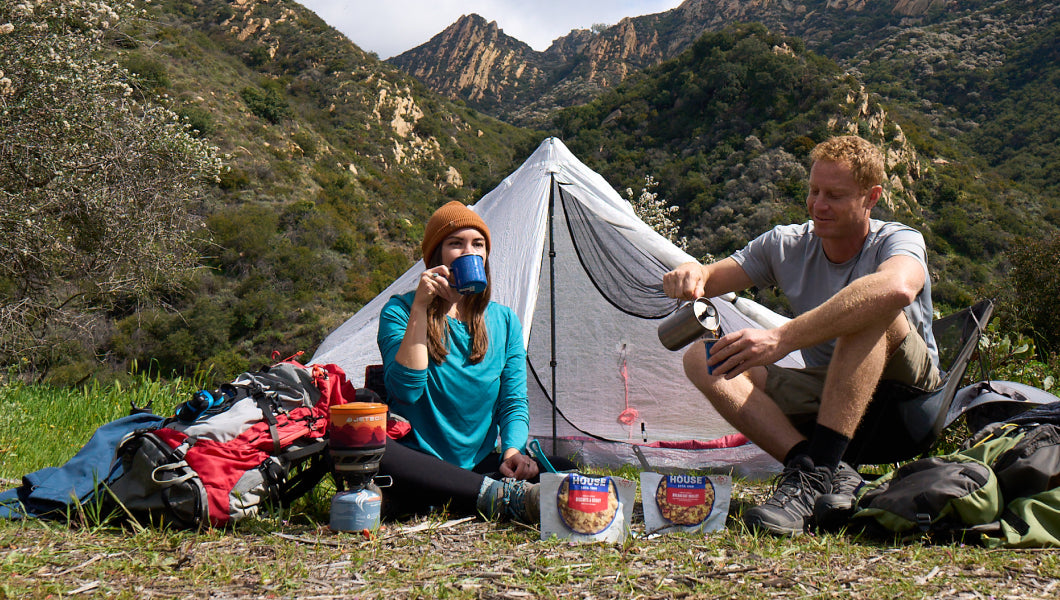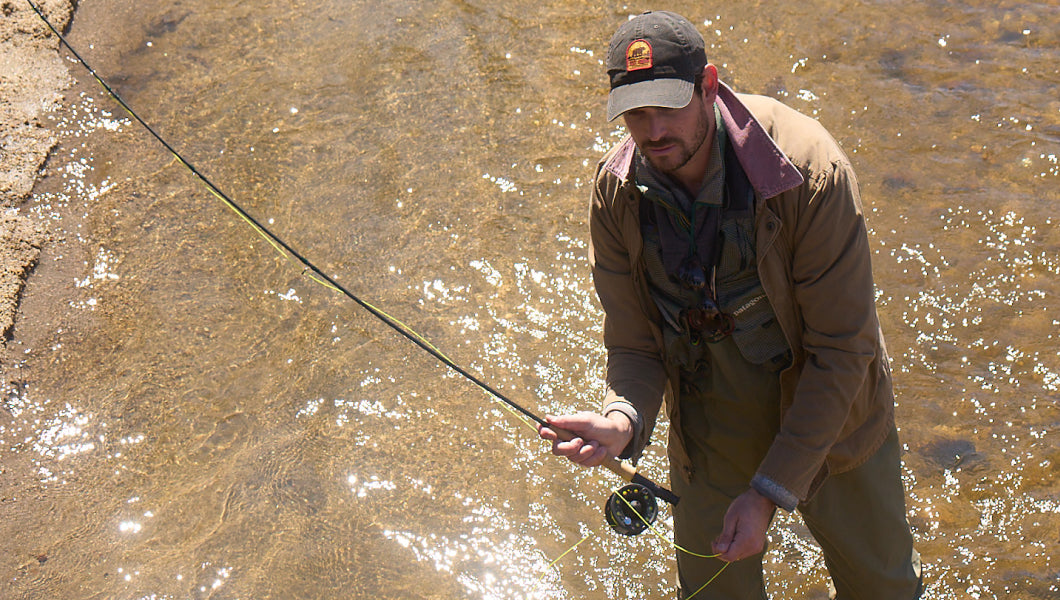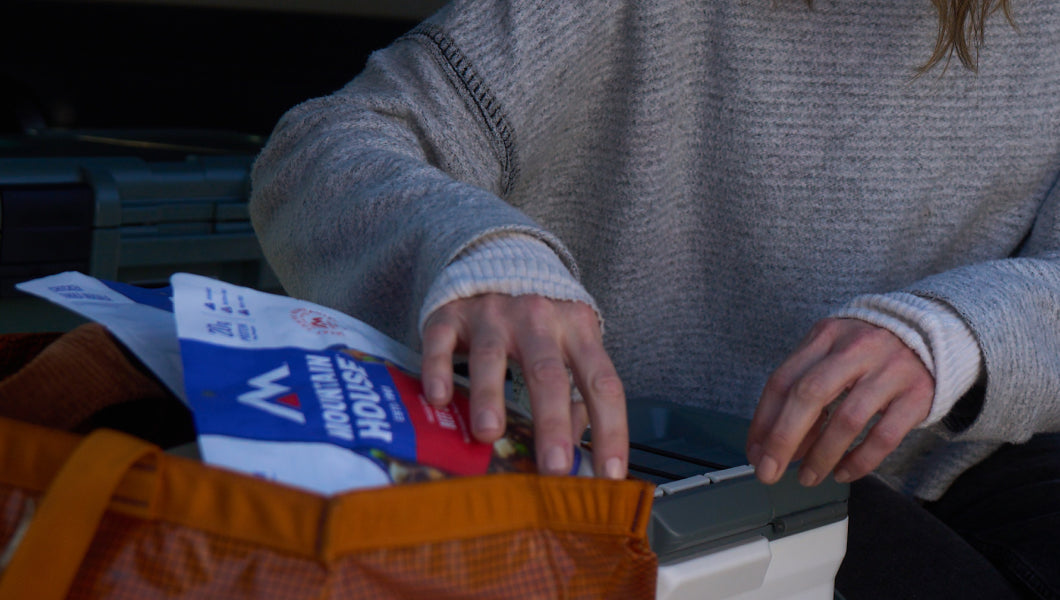Inspired for an Adventure? Check out Beef Stroganoff - Pouch and Beef Stew - Pouch
Free Ground Shipping On All Orders
Over 2,100 Reviews
Add description, images, menus and links to your mega menu
A column with no settings can be used as a spacer
Link to your collections, sales and even external links
Add up to five columns
Add description, images, menus and links to your mega menu
A column with no settings can be used as a spacer
Link to your collections, sales and even external links
Add up to five columns

How to Read the River for White Water Rafting & Kayaking Safety
Running a river means reading the flow like a map unfolding before you in real-time. Good river-runners, of course, know much about that flow they’ll be riding before they shove off from the put-in. But the heart of whitewater rafting and kayaking—and a lot of the joy of these pursuits—is also analyzing, moment-by-moment, what the current’s doing and where the best route through those rapids, drops, and slackwater pools lie.
Let’s run through a few basics of how to read the river for whitewater kayaking and rafting (and whitewater canoeing, too, for those tackling that sub-specialty). Mostly, this’ll be a simple, River Reading 101 glossary on commonly encountered whitewater river features, and how they may influence where you steer that swift vessel of yours.
The Tongue
The tongue, or “Downstream V,” generally represents the target path forward through whitewater. Resembling an upside-down V as viewed from upstream, the tongue usually shows where the fastest and deepest current moves into rapids—and thus (again, usually) the smoothest, least-obstructed way ahead.
The Upstream V
The “Upstream V” is the opposite of the tongue: It appears as a foamy V that’s right-side-up as viewed from the boater moving downriver—in other words, the V points upriver. The Upstream V reveals a submerged or mostly submerged boulder or other obstruction breaking the current, and therefore its point is something to be steered away from even if you can’t see the rock (or whatever it is) itself.
Waves
Part of the building blocks of rapids, river waves form where the current abruptly slows down (as with a change of gradient), where it flows over a submerged rock or other blocking feature, or where two segments of a current clash, among other causes. A familiar sight along fast-moving rivers are standing waves, where stationary crests are formed at such points. Successions of standing waves, decreasing in size downstream, are often called haystacks. Many standing waves are generally friendly features, fun to plow right through or play among.
A wave that breaks in front of a boulder or ledge is sometimes called a cushion wave, and you can use its push-back against the current to veer away from that obstruction.
Eddies
Along with the slackwater often encountered at places along the riverbanks, eddies often (though not always) represent valuable spots to pull out of the main current and take a breather while running a whitewater river. Eddies form behind obstacles such as boulders, being found, for example, between the frothy wings of the Upstream V. As the flow splits around the boulder, a “shadow” of calmer water exists immediately downstream of it. The water filling in behind the boulder into this shadow typically moves slowly upstream, in the reverse direction of the swifter split-flow around the eddy.
While this reverse flow at its strongest can pull a boater into the boulder, barely-moving water can often be found within the heart of a good-sized eddy, where only an occasional paddle or oar stroke is required to maintain a stationary position. Needless to say, that makes eddies among the most important features for river runners, as you can pull into one—in whitewater lingo, “eddy out” or make an “eddy turn”—and wait for boaters behind you, or just take a much-needed break from the whitewater rodeo.
The Eddy Line & Eddy Fence/Wall
The shear line at the margins of an eddy, where it meets the swifter main current, is called the eddy line. You slip across the eddy line to get into and out of the eddy flatwater. An especially vigorous, turbulent eddy line is often called an eddy fence (or eddy wall), and these can be tricky to deal with. Especially intense eddy fences may result in the formation of whirlpools.
Kayakers looking to either eddy out or peel out—exit an eddy—generally aim to cross the eddy line at a 45-degree angle, and raise the downstream (upstream) edge of their craft to enter (exit) the eddy.
The Horizon Line
Generally, when riding a river, you’re seeing the flow surging along into the near distance, up around the next bend. If you see a relatively level rim of water coming up downstream, you’re looking at the horizon line instead, which marks the top of some kind of more pronounced drop—maybe a pour-over ledge or a stretch of gnarly rapids.
Holes
Whether formed below ledges or boulders or within especially deep troughs between waves, holes mark depressions in the flow where upswept water on the downstream side slides backwards into the liquid cavity. Holes vary widely in intensity and thus have earned a whole slew of names among whitewater aficionados. Stoppers—which are breaking waves—merely hold you back if you fail to power through; keepers and reversals can outright trap you (not least the extremely dangerous hydraulics in the reversals below dams and weirs).
Experienced paddlers often play around in appropriate holes; novice ones should usually avoid them.
Strainers & Sweepers
Learning to whitewater kayak means understanding the very real hazards posed by strainers and sweepers from Day One. These are obstacles—typically trees or logs, but also potentially lines, fences, and the like—roughly perpendicular to the flow and poised above or below it. Sweeper and strainer may be used interchangeably, but many river runners distinguish between sweepers as overhanging branches (which can “sweep” paddlers or rafters off their crafts) and strainers as toppled trees, logjams, root structures, or dead trees within the current, often mostly underwater.
Needless to say, being snagged by a strainer or sweeper is one of the most dangerous situations to find yourself in on the river. The current may force you under and pin you among branches. The risk of drowning is high. Keep your eyes peeled for leaning trees or branches sticking out of the water, and do everything you can to give them a wide berth. If you find yourself in the drink, being driven unavoidably toward a strainer, swim powerfully and try to muscle your way over the obstacle above the surface.
Strainers and sweepers are especially tricky because of how dynamic the river environment is. New strainers and sweepers appear regularly, transforming the risk level of a familiar river reach. Be especially cautious after periods of high water—say, from snowmelt or torrential rains—which may gnaw away banks and drop trees into the river, or pile up rafts of logs and branches within the channel.
Undercut Rocks
Undercut rocks are the stony analogue to (usually) woody strainers/sweepers. Common along riverways due to the erosive power of the current, these are boulders or outcrops gouged away just above or below the waterline. A boat is easily pinned at such points, and river-runners may be slammed against the rock or trapped against it underwater. You can often I.D. an undercut rock because of its lack of an upstream pillow, a patch of slackwater created where the current backs up against an obstruction. A pillow often doesn't form against an undercut rock, because the current is able to pass.
Sieves & Siphons
These mark tight portals where water can flow around, between, or under rocks, but which are too constricted for boaters to pass. These are other dangerous blockages along the flow, capable of wrapping a boat or pinning you below the surface. They’re also risky because it can be difficult to see what’s going on just downstream.
River Reading: Part of Rafting & Whitewater Kayaking Basics
Expert instruction and lots and lots of practice running rivers—with the requisite safety training and equipment, of course—are the best ways to become proficient at reading whitewater. Remember, you can find other whitewater rafting tips, whitewater kayaking tips, and more river-running info here on the Mountain House blog (including packing advice for river trips and a roundup of some of the country’s finest paddling streams).
And, of course, you can’t do better for river-running fare than Mountain House meals—don’t push off from shore without it!

River Trip Packing List Essentials: Things You Need to Take

10 Great Paddling Rivers in the U.S.


Stay Hungry for Adventure
Sign Up for Delicious Outdoor Meals & Exclusive Offers!


Join the adventure
©2024 Mountain House — All Rights Reserved.
Your Cart is Empty
Continue ShoppingYour Cart
Subtotal
$0.00
EXPRESS PAYMENT METHODS AVAILABLE IN CHECKOUT
Taxes and Shipping Calculated at Checkout














